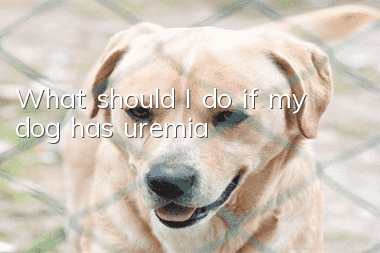Can a French Bulldog give birth naturally? Should French Dou have a vaginal delivery or a caesarean section?

French bulldogs are relatively small, docile and cute, which is why many families choose to raise them. However, when it comes to giving birth to a French bulldog, they don’t know what to do. There are different opinions on the Internet about whether a French bulldog should be delivered naturally or by caesarean section. Some say it must be delivered naturally. , there are also those who say there is no need to give birth naturally. After sorting out information from various sources, let’s summarize how to choose between natural birth and caesarean section for French Bulldogs!
The French bulldog is a breed that has been cultivated by people, which results in some innate differences between it and other dog breeds. Friends who raise French bulldogs will find that French bulldogs don’t like to move at ordinary times, or they may become tired after exercising for a while. To rest means that his physical strength is limited; in addition, you will find that the French Bulldog's head is very large, and the French Bulldog's pelvis is not wide enough to give birth to a French Bulldog baby with a big head, just like humans.
Families raising French bulldogs should choose between natural delivery and caesarean section for French bulldogs based on the actual situation. If the French bulldog is difficult to deliver, a caesarean section should be performed immediately.
What are the symptoms of dystocia in French bulldogs?
Difficult labor situation 1: weak labor pain
Some female dogs do not exert enough force when giving birth, or exert only a little force when the labor pains begin. In addition, they do not exercise enough on weekdays and lack exercise of their muscles and bones, which will cause weak labor pains. Some female dogs are afraid of pain, are obese, or are dissatisfied with the birth environment, which may also cause weak labor pains. On the other hand, weak labor pains may also be caused by low calcium in the bitch's blood, or by the inactivity of the hormones that cause labor pains.
Although labor accelerators are helpful for production, dogs are multi-fetal animals, and the use of labor accelerators must be used by veterinarians based on clinical symptoms.
Dog dystocia situation 2: narrow birth canal
The fetus is not too big, but it cannot be delivered smoothly. At this time, it is most likely caused by the narrow pelvis of the female dog itself, which prevents the fetus from passing through, or by the underdevelopment or narrow vagina. If this happens, ask your veterinarian to perform a caesarean section.
Situation 3 of dog dystocia: the fetus is too large
Corresponding to the stenosis of the birth canal, the fetus is too large, and the female dog is given too much nutrients and not enough exercise during pregnancy; or if the number of fetuses is small, and only one is pregnant, the fetus develops too large, so that the fetal head is larger than the mother's. When a dog's birth canal is much larger, it can cause difficult labor. If the difference is not big at this time, you can try to cut the perineum and take out the fetus, otherwise you can only perform a caesarean section.
Situation 4 of dystocia in dogs: early placental detachment
The placenta is separated from the uterus before the pregnancy is over and before the date of delivery, which is called premature placental separation. When the placenta is separated early, the female dog will have a large amount of dark green secretion from the vagina. At this time, it means that the fetus in the abdomen is at least one.More than one placenta has been removed, which means that at least one of the puppies is dead or on the verge of death. This situation may occur due to abnormalities in the female dog, such as other diseases that make her unable to maintain the pregnancy, or external impact on the abdomen, such as traffic accidents, falls, fights, etc.; in some cases, the fetus may be infected or due to some factors. Death etc. When encountering this situation, you should quickly ask an experienced veterinarian to handle it appropriately according to the situation. Otherwise, not only will the puppies not be saved, but the safety of the mother will also be jeopardized.
Situation 5 of dystocia in dogs: Improper fetal position
During delivery, the fetus is not delivered head first as normal, but adopts other incorrect postures to advance toward the birth canal. This is called fetal malposition. Some incorrect fetal positions can still give birth smoothly, while others can cause decisive dystocia. Therefore, if the female dog has severe labor pains and the time is tight, but still cannot deliver the fetus, it is necessary to suspect whether the fetal position is incorrect. Fetal malposition can usually be diagnosed through X-rays. Generally, there are the following situations:
A fetus in reverse position with its hind limbs facing the birth canal is called inversion. Although this situation is sometimes more difficult to deliver than a normal fetal position, it is still mostly a natural birth. Most of the difficulties occur when the head is stuck, so you need to pay more attention during midwifery and provide timely assistance.
In the posterior head position, when the fetus enters the pelvis, the fetal head will turn prone, with the nose facing the chest and the neck curled. Therefore, the width of the head increases, making it difficult to pass through the pelvis. At this time, an experienced veterinarian must be asked to assist with adjustment. Otherwise, production will not be successful.
Breech presentation: When the fetus is delivered in reverse position, the hind limbs are retracted toward the abdomen and the buttocks are directed toward the birth canal, causing the buttocks to become too large and unable to pass through the pelvic cavity, resulting in dystocia. At this time, we should try to transpose it so that it can be produced smoothly.
Lateral position: Due to the trifurcated relationship between the left and right uterine horns and the uterus, the fetal head enters the uterine body and accidentally enters the uterine horns on the way to the birth canal. This is the occurrence of lateral position. The fetus in the lateral position will become V-shaped, with one front foot facing the birth canal. This situation will cause absolute dystocia. If the transposition is unsuccessful, you can try to use forceps to remove it; if that still doesn't work, you can only perform a caesarean section.
- Why do dogs like to sleep under the bed?
- What should I do if my puppy keeps barking in the cage?
- How to train a German Shepherd? The best time to train a German Shepherd!
- Will dogs with gastrointestinal problems have bad breath?
- What should I do if my French Bulldog eats too much and has diarrhea?
- How many meals does Harry the dog eat a day?
- 5 minutes to quickly understand the pros and cons of pet neutering
- Dog training is ineffective, let’s take a look at these misunderstandings!
- Can dogs wear clothes? In fact, there are hidden dangers in wearing clothes for dogs!
- Can pet dogs eat plums?



